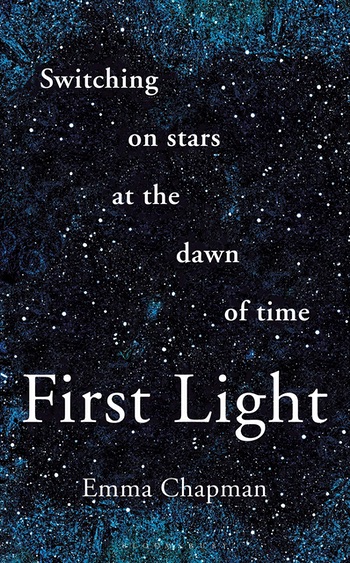Review: First Lightby Jeff Foust
|
| This book is oriented towards that general public audience, using the study of the first stars as a thread to tie together topics ranging from stellar physics to cosmology, with some humorous asides and anecdotes thrown in. |
In First Light, British astrophysicist Emma Chapman takes the reader through a tour of our state of understanding, or lack thereof, about the early universe. Those original Population III stars are notable because they are metal-free (astronomers, she reminds us, define “metal” as any element other than hydrogen or helium), as those heavier elements were forged in stars. Astronomers have yet to find any such stars: most likely exploded in supernova explosions not long after they formed, but a “long tail” of smaller stars may have survived.
Finding those stars could help astronomers understand the conditions of the early universe when they formed in that Cosmic Dawn and Epoch of Reionization (the latter term, she acknowledged, may be the term of art in the field but a “terrible, terrible name” at least to the general public.) This book is oriented towards that general public audience, using the study of the first stars as a thread to tie together topics ranging from stellar physics to cosmology, with some humorous asides and anecdotes thrown in. The result in a book that not only tackles the question of the origins of the first stars but also puts it in the context of our broader understanding of the early universe, and why understanding how those stars formed is so important.
“Astronomy has broadened from a necessity in ancient civilisations, through a curious hobby for the rich, to an existential science broadcast to the masses,” Chapman writes in the book’s introduction. The choice of “necessity” is an interesting one, since it suggests that astronomy is no longer a necessity for day-to-day life, which is true. But, as she also notes, it remains a topic of interest to the public, perhaps because of the big questions it asks and tries to answer, like how the first stars formed. We want to know where we came from and where we’re going, questions easy to ask but difficult to answer.
Note: we are using a new commenting system, which may require you to create a new account.
